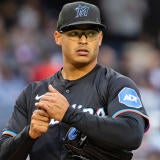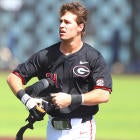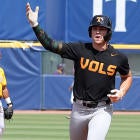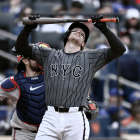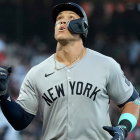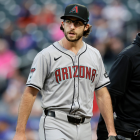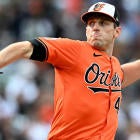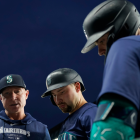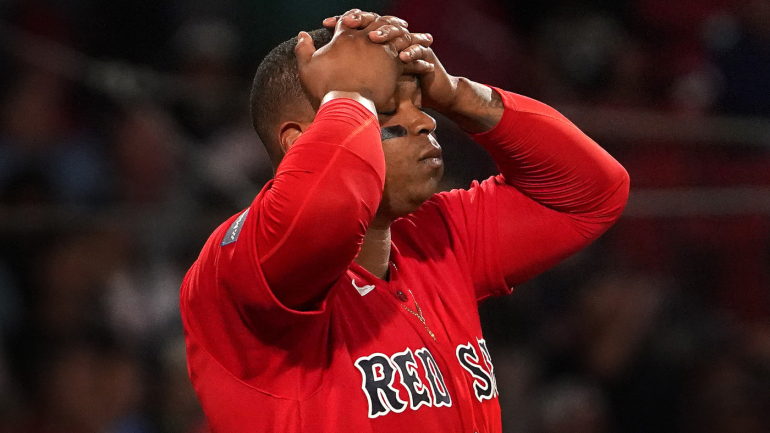
The Boston Red Sox have reportedly hired Craig Breslow as their new top baseball decision maker. Breslow, a former big-league pitcher, had previously been a well-regarded member of the Chicago Cubs front office.
Breslow's job is to now do a better job of running the Red Sox than former top executive Chaim Bloom, who led the Red Sox to just one playoff appearance in four tries, and had otherwise navigated them to a tick-better-than-.500 (267-262) regular-season record in his other three attempts.
Bloom, who had previously been a member of the Tampa Bay Rays front office, willingly entered into a difficult situation when he took the Red Sox job. It was well known that the Red Sox would look to move superstar outfielder Mookie Betts. Bloom did just that, and received an underwhelming package in return. He also inherited a front office that was mostly in place, including at the assistant general manager level, and an outdated minor-league infrastructure.
Breslow won't face the same challenges -- at least on the Betts front -- but we here at CBS Sports decided to ask (and hopefully answer) a simple question: what will it take for the Red Sox to emerge from their recent stretch of mediocrity? Here are three aspects Boston's new boss will need to address.
1. Improve run prevention unit
Defense has long been a staple of the Tampa Bay squads Bloom helped build. The Rays have finished with a below-average defense just twice since 2016, according to Statcast's Outs Above Average metric. Comparatively, the Red Sox have finished well below average in each of the last three seasons:
2021: -40 OAA
2022: -13 OAA
2023: -51 OAA
In case you were wondering, that minus-51 mark is absurd. Since the start of the Statcast Era (2016), only one team has finished with a worse defense -- the 2017 New York Mets, who checked in at minus-57 outs. No other team this season is worse than 25 outs below average, let alone 50-plus.
It's not easy to find bright spots for the Red Sox's defense, but they've been especially poor on the infield throughout the year. Take a look at their most frequently used infield alignment (including departed players) this season as well as their Outs Above Average metric:
| Player | Position | OAA |
|---|---|---|
1B | -10 | |
2B | -3 | |
3B | -8 | |
Enrique Hernández | SS | -14 |
Wisdom is maintaining a healthy skepticism of publicly available defensive metrics. Still, that's a brutal collection of gloves to set behind a pitching staff that, on aggregate, has the majors' ninth-highest ground-ball percentage. (We will note that Trevor Story has graded well since returning, though Boston continues to wait for his bat to show signs of life.)
Finding a way to improve the team defense, and particularly the infield, seems like the easiest piece of low-hanging fruit for Breslow.
2. Put savings to use
One ironic aspect of Bloom's reign is that he was brought in to, at least in part, improve the Red Sox's farm system and decrease their payroll. He accomplished both feats, yet he won't be around to reap the benefits. (We'll touch more on the farm system in the next section.) Payroll-wise, the Red Sox have ranked sixth or lower in Opening Day payroll three years running. Prior to then, Boston had ranked in the top five every year since 2003.
The Red Sox will shed even more salary this winter by declining Corey Kluber's option and waving farewell to prospective free agents James Paxton and Adam Duvall. Cot's Contracts has Boston projected for a $137 million payroll, though to be fair that's without taking arbitration raises into account. At minimum, they're likely to have several tens of millions separating them from the $181-million mark they posted entering this season. The Red Sox, then, are well-positioned to make a splash this winter if they so desire.
That established, figuring out who Breslow should spend that money on is a tougher assignment. Executives across the league have panned this winter's free-agent class to CBS Sports in recent weeks. The Red Sox would not seem like a serious contender for Shohei Ohtani, and it's anyone's guess as to how wacky the bidding gets for Blake Snell, Cody Bellinger, and Yoshinobu Yamamoto, among others.
Breslow could, in theory, look to make an impact on the trade market. The Milwaukee Brewers could make sense on paper as a potential partner, given that shortstop Willy Adames and right-hander Corbin Burnes will be entering their walk years.
Of course, such a deal would make sense only if Breslow intends to seriously compete in 2024. It's too early to know for sure on that aspect. Still, one can dream that the Red Sox return to acting like a large-market behemoth rather than a large-market behemoth cosplaying as a small-market one.
3. Dream upon top prospects
As noted above, one positive thing you can write about Bloom's tenure is the Red Sox improved their farm system under his watch. Indeed, Boston has several intriguing young talents who are making their ways up the organizational ladder. (That's in addition to the contributions they've received in the majors from slugger Triston Casas, righty Brayan Bello, and utility player Ceddanne Rafaela.)
We wanted to briefly highlight five prospects in particular who could begin to factor into the Red Sox's plans (and lineups) beginning as soon as next season.
We considered shortstop Marcelo Mayer to be the top player heading into the 2021 draft. The Red Sox landed him at No. 4. He's since ascended to Double-A ahead of his 21st birthday. The early returns there haven't been promising -- he's struck out in 26% of his first 190 plate appearances -- but we'll give him a pass for now because of the sample size and because he's young and has been plagued this season by wrist and shoulder issues. It doesn't hurt that Mayer is a fluid defender whose feel more than makes up for his lack of loud tools.
Quick start with a leadoff double by Roman Anthony, his first with Portland 💪 pic.twitter.com/FdVFEgQSa6
— Portland Sea Dogs (@PortlandSeaDogs) September 9, 2023
Outfielder Roman Anthony has engendered as much helium as anyone else in the system, and perhaps the league. He's appeared at three levels this season, reaching as high as Double-A, and has batted .269/.400/.467 overall. Anthony possesses big-time raw strength as well as a great command of the strike zone. He may outgrow center field, but his bat has middle-of-the-order upside.
The Red Sox spent recent first-round picks on catcher Kyle Teel (No. 14 this summer) and second baseman Nick Yorke (No. 17 in 2020). Teel is a high-quality athlete who has rocketed his way to Double-A. He projects as a contact-driven hitter and he could debut as soon as next season. Yorke is a bat-first second baseman whose game may not feature a plus tool.
There's also outfielder Miguel Bleis, a toolsy outfielder with a massive ceiling. He had to undergo season-ending shoulder surgery in June.











